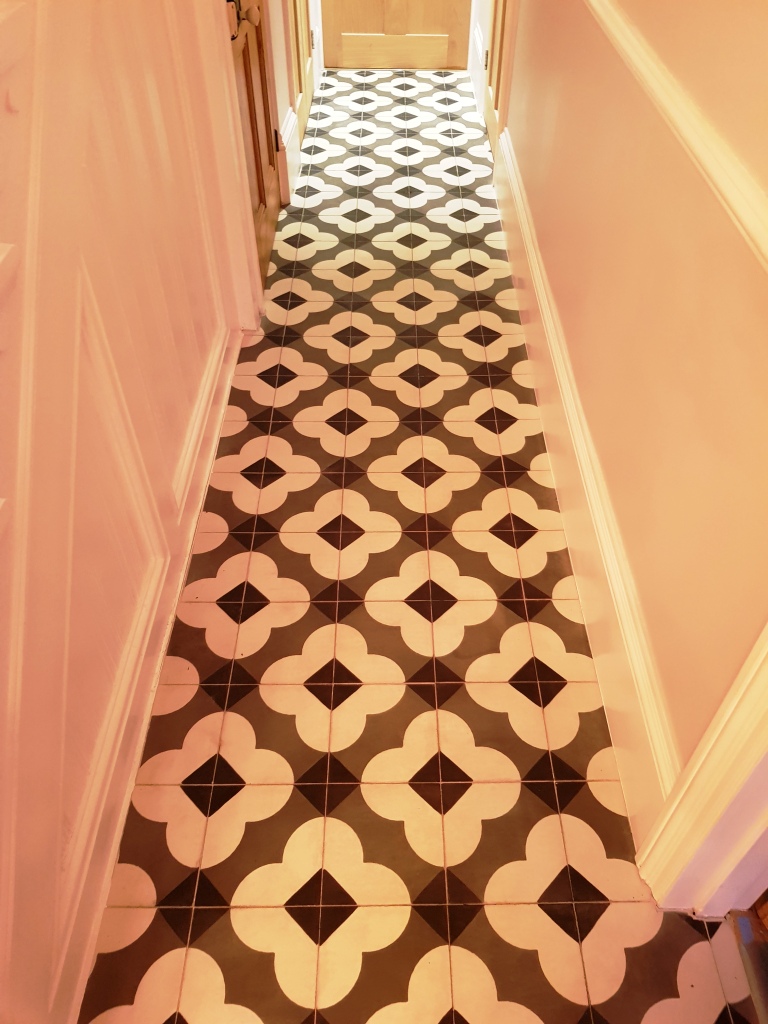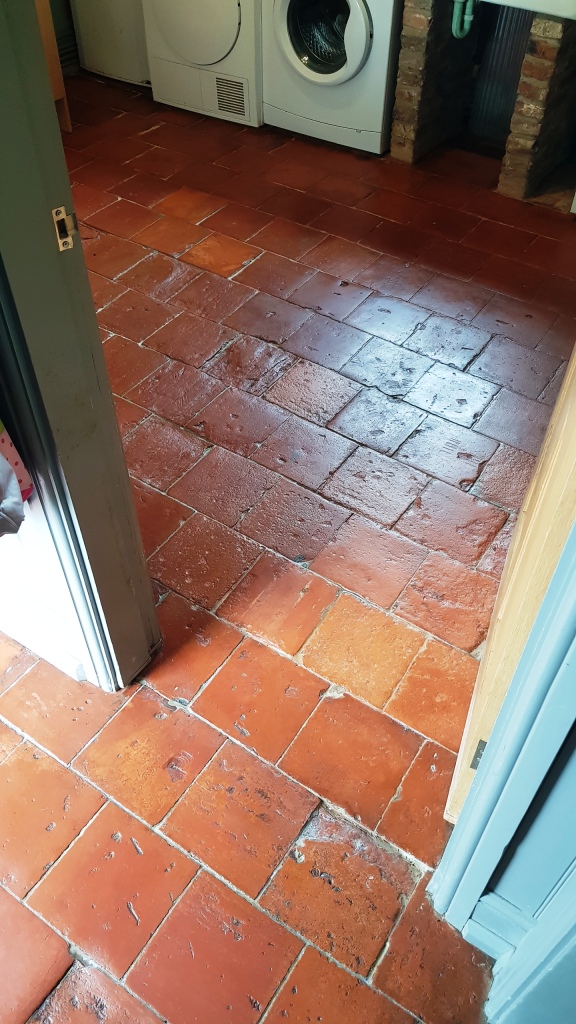
In this case of this Slate floor the sealer had worn off many years prior and a thick layer of grime had built up on top of what was once an amazing looking floor. Stone floors never come with a care guide and the process of degradation happens so slowly, so you can understand how this could happen over time.

Cleaning Dirty Slate Kitchen Tiles
Before starting I protected the wooden kitchen units from splashing using plastic sheeting. Next step was to soak the tiles in a strong dilution of Tile Doctor Remove and Go and Pro-Clean combined into a strong cleaning and stripping cocktail. The solution was left to dwell for ten minutes before being scrubbed in using a black scrubbing pad fitted to a rotary floor machine running at slow speed to break through the grime and the sealers and oils that the previous owner had used on the slate. The pad is good at scrubbing the tiles but struggles to get into the grout so after the tiles were scrubbed I followed by running a stiff brush along the grout lines to give them a thorough clean. The soiled cleaning solution was rinsed off the tiles with water and then extracted off the floor using a wet vacuum. With the floor clear it was inspected, and problem areas re-treated using the same process. Once I was satisfied that the Slate and the Grout was clean and clear of old sealers I gave the whole floor a final rinse to remove any trace of cleaning products and then dried as much as possible using the wet vacuum. The floor was then left to dry out fully overnight.Sealing Kitchen Slate Tiles
Returning to the property the next day, I ran some quick damp tests to check for any excess moisture that might have prevented me from sealing the floor. We will always do this as excess moisture can affect the sealer curing. Our client had previously decided that they liked the look of our High Shine Sealer due to how it brings the stunning colours of the Slate out. High Shine Sealer is a specially formulated water-based blend of acrylic polymers that provides both a stain resistant surface seal and a durable high-sheen finish. Four coats of sealer were applied and when the customer arrived home later that day they were totally blown away by the floor and how amazing it looked. |
 |
Source: Slate Tile Cleaning and Restoration Service in Yorkshire

















